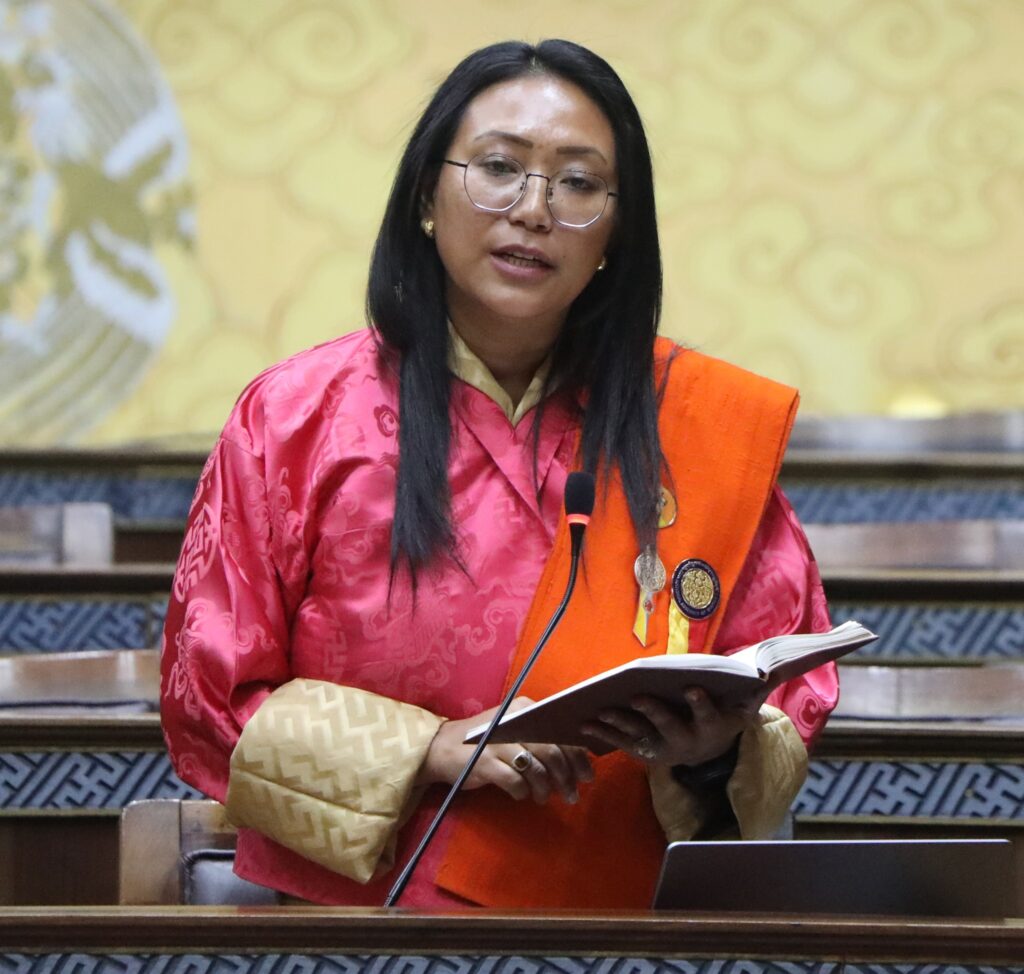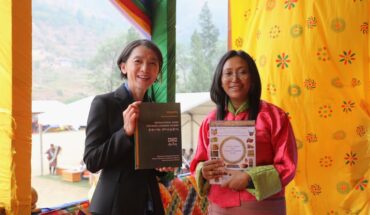
TIL BDR GHALLEY
Thimphu
The Ministry of Education and Skills Development (MoESD) has confirmed that budget allocation for all schools in Bhutan, whether central or non-central, is based on a common minimum facility standard.
Education Minister Yeezang De Thapa made this statement during a National Assembly session on June 9, 2025, responding to concerns about unequal resource distribution raised by Dewathang-Gomdar MP Tshering Penjor.
Minister Yeezang De Thapa said, “Nu 5.5 billion has been allocated for infrastructure development in non-central schools across the country.
This funding will be used to build multipurpose halls, dining halls, teachers’ residential quarters, toilets, and other necessary facilities. She emphasized, “All schools will receive support regardless of whether they are classified as central or non-central”.
MP Tshering Penjor expressed concerns that the government’s focus on central schools, launched in 2015 as part of education reforms, might be causing non-central schools, especially those in remote areas, to lack essential facilities.
He also questioned the transparency of budget allocations for non-central schools under the 13th Five-Year Plan, stating, “There is a lack of clarity on how funds are distributed”.
In response, Minister Yeezang De Thapa assured the National Assembly, “We are committed to providing essential infrastructure such as libraries, dining halls, multipurpose halls, toilets, and teacher housing to both central and non-central schools.”
She further explained that budget allocation follows the common minimum facility standard, which considers the number of students and specific needs of each school across all 20 dzongkhags and four thromdes.
Currently, Bhutan has 566 schools. Of these, 63 are designated as central schools, while 403 are non-central schools, including various primary and secondary institutions.
The Minister said, “Central schools serve about 23.2 percent, which is 32,761 students, while non-central schools serve the majority, accounting for 76.8 percent or 108,472 students”.
She added, “Central schools offer classes from pre-primary to Class 12 and were established to provide quality education to students from disadvantaged backgrounds. They are intended to be centers of academic excellence. Non-central schools cover a wide range of primary and secondary education across the country”.
Referring to the Bhutan Poverty and Equity Assessment 2024, Minister Yeezang De Thapa stated, “The poverty rate in Bhutan declined from 28 percent in 2017 to 11.6 percent in 2022.
However, 56 percent of the population still lives in rural areas, with 87 percent of those living below the poverty line.
She noted, “While central schools aim to support disadvantaged students, the government is equally committed to improving facilities in all schools”.
Regarding the government’s overall education sector budget for the 2025-2026 fiscal year, the Minister said, “The budget is nearly Nu 28 billion.
This budget aims to transform Bhutan’s education system and build a workforce suited for the 21st century. She added that it includes investments for redeveloping central schools, professional development for teachers, and upgrades to technical and vocational education.
Minister Yeezang De Thapa said, “We plan to complete 70 percent of the redevelopment of 20 central schools. The budget will also support the second phase of the Recovery School in Kanglung and establish an international school.”
She added that more than Nu 344 million is allocated for teacher professional development programs, including Master of Education courses at the Paro and Samtse Colleges of Education.”
Lyonpo said, “Nu 200 million is set aside to upgrade four Technical Training Institutes, and over Nu 222 million will be used to enroll more than 3,000 job-seeking youth in these institutions”.
On the budget breakdown, the Minister said, 43.8 percent is allocated for capital projects, 42.2 percent for current spending, 12 percent for debt repayment, and 1.4 percent for on-lending activities. She noted, “About 25 percent of the total 13th Five-Year Plan budget will be spent during this fiscal year”.
Minister Yeezang De Thapa also highlighted the diversity of school sizes in Bhutan, stating, “There are 313 primary schools with fewer than 50 students, 114 schools with fewer than 104 students, and 100 schools with fewer than 100 students.”
She further added that this data supports the need for budget allocation based on actual school requirements rather than uniform funding.
On technical and vocational education and training (TVET), the Minister said, “We are focusing on expanding TVET to meet economic needs. Supported by projects like the Skills Training and Education Pathways Upgradation Project funded by the Asian Development Fund, Bhutan aims to provide modern and job-oriented skills development.”
Regarding the national budget, Minister Yeezang De Thapa said the 2025-2026 national budget is the highest ever for Bhutan, totaling over Nu 138 billion.
Social services such as education and health receive the largest share, with education alone allocated nearly Nu 28 billion, about 20 percent of the total budget.
This budget strategy by the Ministry of Education and Skills Development aims to ensure fair and needs-based funding for all schools in Bhutan, promoting equal access to quality education for all students across the country.





